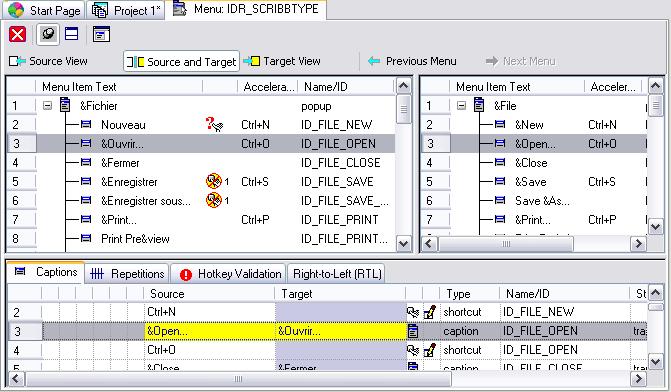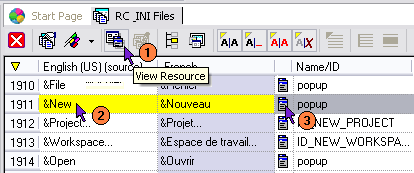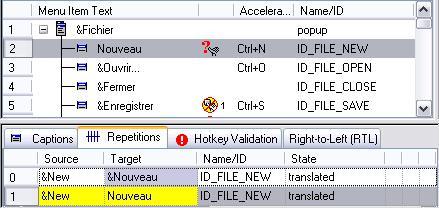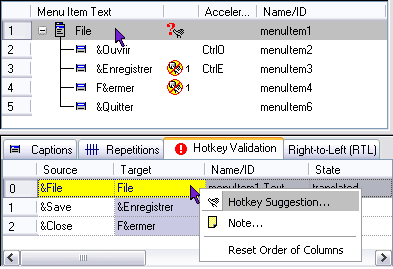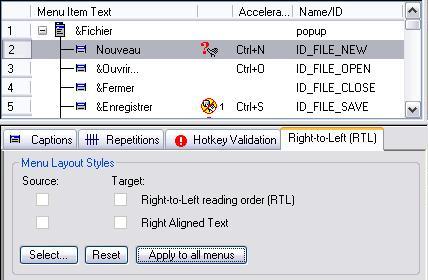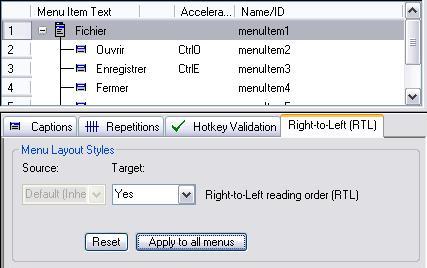|

|
Toolbars
|
The Menu view has two toolbars with commands for working with : the Menu View toolbar and the Navigation toolbar.
|
·
|
Menu View Toolbar

|

|
Close Button
Closes the Menu view.
|
|

|
Fixed View Button
Fixes, or designates, the view as the one view for displaying . When this button is pressed, this view alone will be used to display menu resources. Otherwise, a new, separate view will be opened for each menu that you want to display.
|
|

|
Tile Window Button
Tiles the window vertically with the primary Menu (tree) view on top and the tab views on the bottom.
|
|

|
Menu Preview Button
Opens a Menu Preview window.
|
|

|
Hotkey Suggestion Button
Opens the Hotkey Suggestion dialog box.
|
|
|
·
|
Navigation Toolbar

|

|
Source View Button
Limits the menu tree view display to the source only. The target menu will be hidden.
|
|

|
Source and Target View Button
Displays the source and target menus side by side.
|
|

|
Target View Button
Limits the menu tree view display to the target menu only. The source menu will be hidden.
|
|

|
Previous Menu Button
Displays the previous menu (sequentially) in the active translation project.
|
|

|
Next Menu Button
Displays the next menu (sequentially) in the active translation project.
|
|
|

|
Tab Views
|
There are four different tab views in the secondary window of the Menu view: Captions, Repetitions, Hotkey Check, and Right-to-Left (RTL).
|
·
|
Captions Tab View
The Captions tab view (Figure 1) lists the texts of all the menu items for the selected . As with the Text Table view, an item can be selected and translated directly in the view () as well as through the Translation Edit bar.
|
|
·
|
Repetitions Tab View
The Repetitions tab view (Figure 3) lists all of the repetitions for the item currently selected in the Menu view. All that have the exact same are considered repetitions.
|
|
![]() ).
).